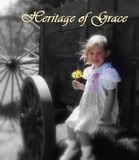Three weekends ago, we went to Heidelberg, Germany which is a little over an hour northeast of us. We had a great couple of days (as we went back two days in a row) and all agreed that it is one of our favorite places so far - very relaxing atmosphere and family friendly. We saw and did a lot in those two days, so I have several posts that should be up soon with lots of pictures!!
Before we go on though, here is a little background information on the city of Heidelberg and a few of the attractions within...
Philosopher's Walk - "The Philosophers’ Walk, or Philosophenweg, in Heidelberg is a walking route which takes you up on the slopes of the hills to the north of the old town. From here, you will get one of the best views of Heidelberg and its castle, and perfect for taking photos. The route was laid out in 1817 and reaches an altitude of 200 metres. It gained its name because the philosophers and lecturers of Heidelberg University were know to walk and talk along this route. Along the route you will find areas of well-kept gardens, with unusual plants and trees. "
Before we go on though, here is a little background information on the city of Heidelberg and a few of the attractions within...
The Heidelberg Catechism - "The Heidelberg Catechism (1563) was composed in the city of Heidelberg, Germany, at the request of Elector Frederick III, who ruled the province of the Palatinate (this is the part of Germany we live in) from 1559 to 1576. The new catechism was intended as a tool for teaching young people, a guide for preaching in the provincial churches, and a form of confessional unity among the several Protestant factions in the Palatinate. An old tradition credits Zacharias Ursinus and Caspar Olevianus with being the coauthors of the catechism, but the project was actually the work of a team of ministers and university theologians under the watchful eye of Frederick himself. Ursinus probably served as the primary writer on the team, and Olevianus had a lesser role. The catechism was approved by a synod in Heidelberg in January 1563. A second and third German edition, each with small additions, as well as a Latin translation were published the same year in Heidelberg. The third edition was included in the Palatinate Church Order of November 15, 1563, at which time the catechism was divided into fifty-two sections or Lord’s Days, so that one Lord’s Day could be explained in an afternoon worship service each Sunday of the year.
The Synod of Dort approved the Heidelberg Catechism in 1619, and it soon became the most ecumenical of the Reformed catechisms and confessions. It has been translated into many European, Asian, and African languages and is still the most widely used and warmly praised catechism of the Reformation period."
Heidelberg Castle - "Heidelberg Castle is one of the Germany's most important cultural monuments and proudly stands high above the old town center. It experienced a grand and eventful history as the royal seat of the Electors of the Palatinate from the 13th to the 18th century. Over the centuries the bustling building activity of the Palgraves resulted in an ensemble of representative palace and garden art with great artistic achievements in the style of the Renaissance.
Following the destruction of the palace in the War of Palatinate Succession (1688-1697), Electors Johann Wilhelm, Karl Philipp and Karl Theodor carried out various restoration measures, although the royal seat had been moved to Mannheim beginning in 1720. A lightning strike in 1764 and the major fire that followed once again reduced the palace to ashes. Since the 19th century, Heidelberg has been famous the world over for the romantic appearance of its palace ruins. "
Church of the Holy Spirit -
The Old Town - "The Old Town of Heidelberg starts from Sofienstrasse and brings you to the castle. In the middle there is the University Area (the oldest university in Germany), the main shopping street (Hauptstrasse) and it includes to famous Karl-Theodor-Bridge / the Old bridge."
The Old Bridge - "Friedrich Hölderlin wrote poems about it, and so did Gottfried Keller. Countless painters have also immortalized it in their works: the Old Bridge, whose real name is the Carl Theodor Bridge after the man who had it built. The bridge’s nine red sandstone arches span the Neckar River and blend harmoniously into their surroundings, framed by the river and mountains.
The Old Bridge is actually relatively young, and was preceded by many older bridges made of wood. The first bridge was recorded at this site in 1284. But like all of the wooden bridges that followed, it eventually fell prey to high water and ice. This finally prompted Prince Elector Carl Theodor – after a major flood with ice had destroyed the last wooden bridge in 1784 – to construct the first stone bridge in 1786-88. Raised bents in its middle allowed water to drain off quickly when the river flooded.
The Synod of Dort approved the Heidelberg Catechism in 1619, and it soon became the most ecumenical of the Reformed catechisms and confessions. It has been translated into many European, Asian, and African languages and is still the most widely used and warmly praised catechism of the Reformation period."
Following the destruction of the palace in the War of Palatinate Succession (1688-1697), Electors Johann Wilhelm, Karl Philipp and Karl Theodor carried out various restoration measures, although the royal seat had been moved to Mannheim beginning in 1720. A lightning strike in 1764 and the major fire that followed once again reduced the palace to ashes. Since the 19th century, Heidelberg has been famous the world over for the romantic appearance of its palace ruins. "
Church of the Holy Spirit -
House of Knight St. George -
The Old Town - "The Old Town of Heidelberg starts from Sofienstrasse and brings you to the castle. In the middle there is the University Area (the oldest university in Germany), the main shopping street (Hauptstrasse) and it includes to famous Karl-Theodor-Bridge / the Old bridge."
The Old Bridge - "Friedrich Hölderlin wrote poems about it, and so did Gottfried Keller. Countless painters have also immortalized it in their works: the Old Bridge, whose real name is the Carl Theodor Bridge after the man who had it built. The bridge’s nine red sandstone arches span the Neckar River and blend harmoniously into their surroundings, framed by the river and mountains.
The Old Bridge is actually relatively young, and was preceded by many older bridges made of wood. The first bridge was recorded at this site in 1284. But like all of the wooden bridges that followed, it eventually fell prey to high water and ice. This finally prompted Prince Elector Carl Theodor – after a major flood with ice had destroyed the last wooden bridge in 1784 – to construct the first stone bridge in 1786-88. Raised bents in its middle allowed water to drain off quickly when the river flooded.
On March 29, 1945, one of the very last days of the War, German soldiers used explosives to render all of Heidelberg’s Neckar bridges impassable, including the Old Bridge. But thanks to a drive to collect donations that was enthusiastically supported by the town’s residents, work to rebuild it began as soon as March 14, 1946. It was inaugurated on July 26, 1947. In 2001 the Old Bridge was added to the World Monuments Fund, a list of the world’s most endangered monuments."
Philosopher's Walk - "The Philosophers’ Walk, or Philosophenweg, in Heidelberg is a walking route which takes you up on the slopes of the hills to the north of the old town. From here, you will get one of the best views of Heidelberg and its castle, and perfect for taking photos. The route was laid out in 1817 and reaches an altitude of 200 metres. It gained its name because the philosophers and lecturers of Heidelberg University were know to walk and talk along this route. Along the route you will find areas of well-kept gardens, with unusual plants and trees. "
Extra Facts:
- Martin Luther actually visited Heidelberg in 1518 when he came to Heidelberg for the Heidelberg Disputation. While he was there, he visited the castle and later wrote to a friend, George Spalatin, praising the castle's beauty and its defenses.
- General Patton died in a military hospital in Heidelberg on December 21st, 1945 after fatal injuries from a car accident during a hunting expedition.






























1 comment:
In 1969-1970, my dad was stationed as a surveyor with the Army at Heidelburg. His photo album has some really cool pictures of the area.
Post a Comment